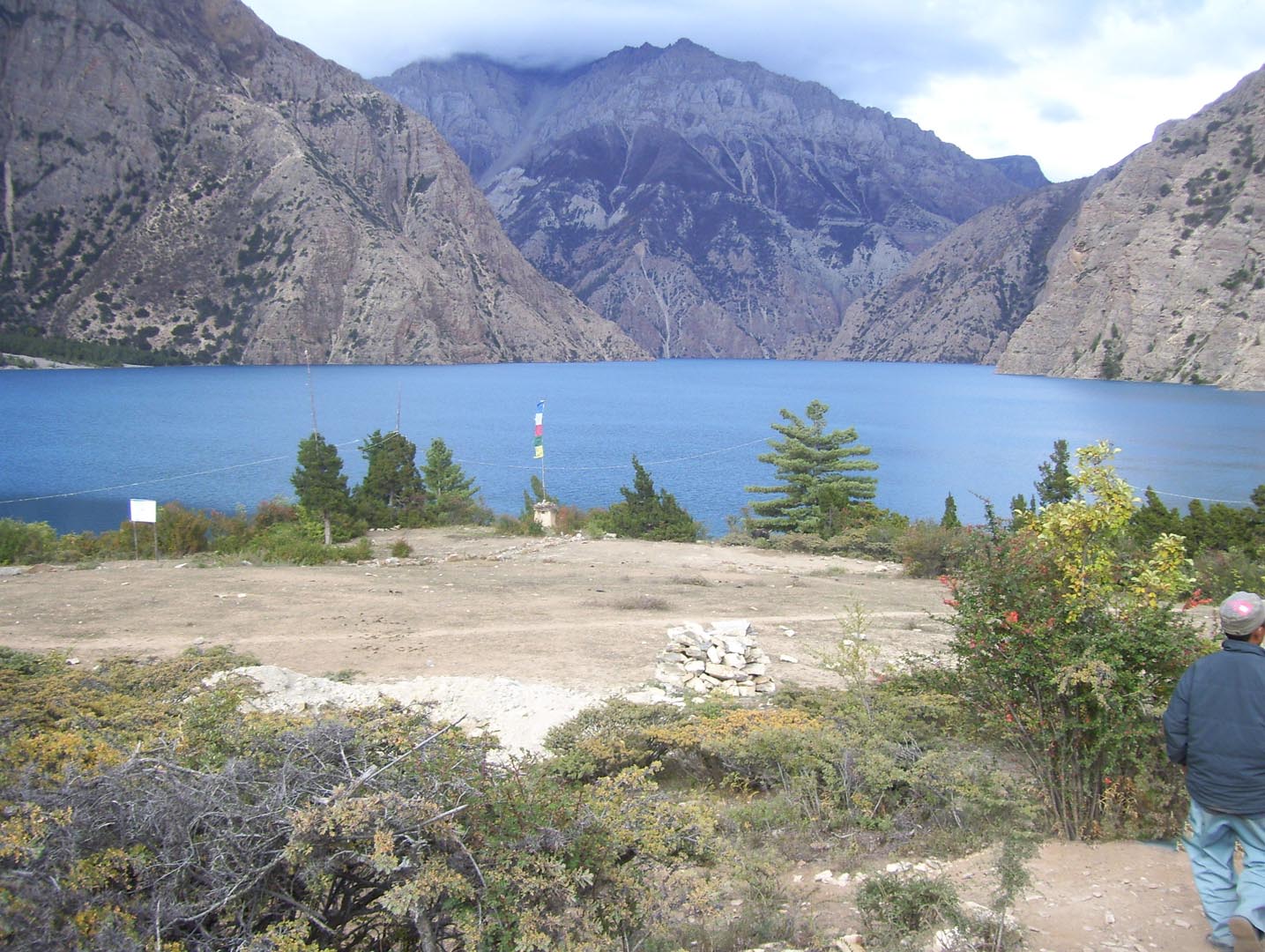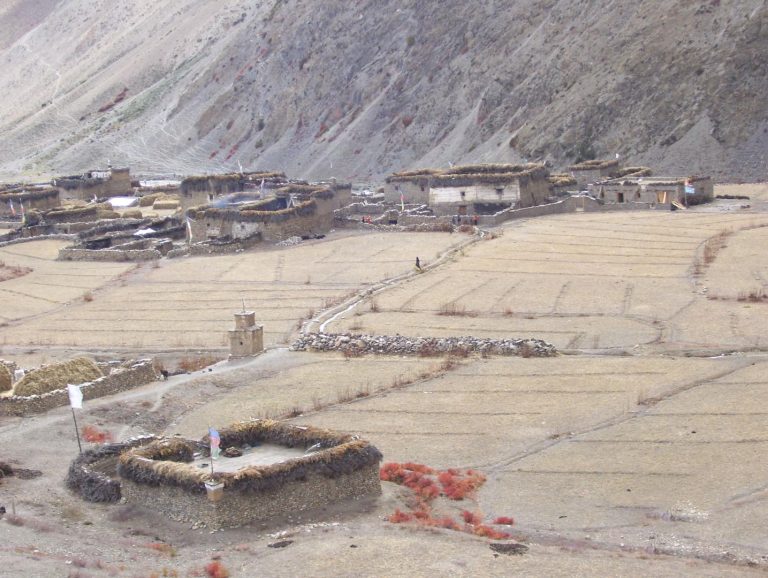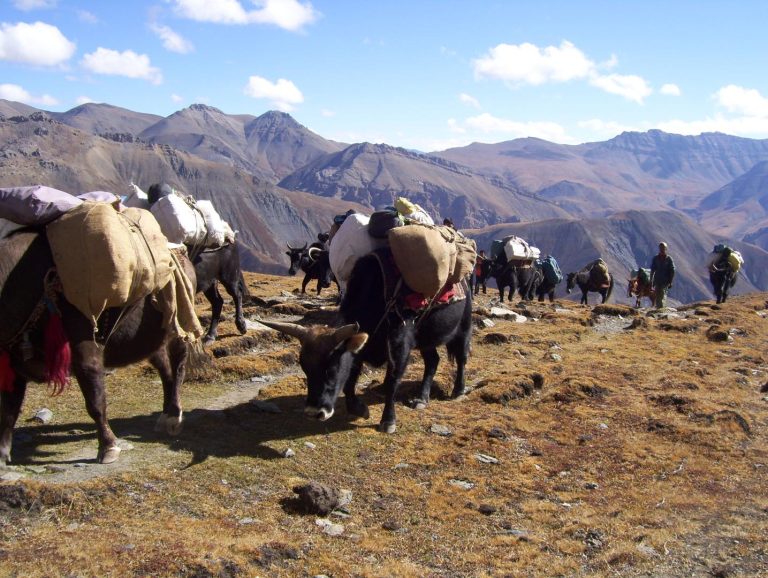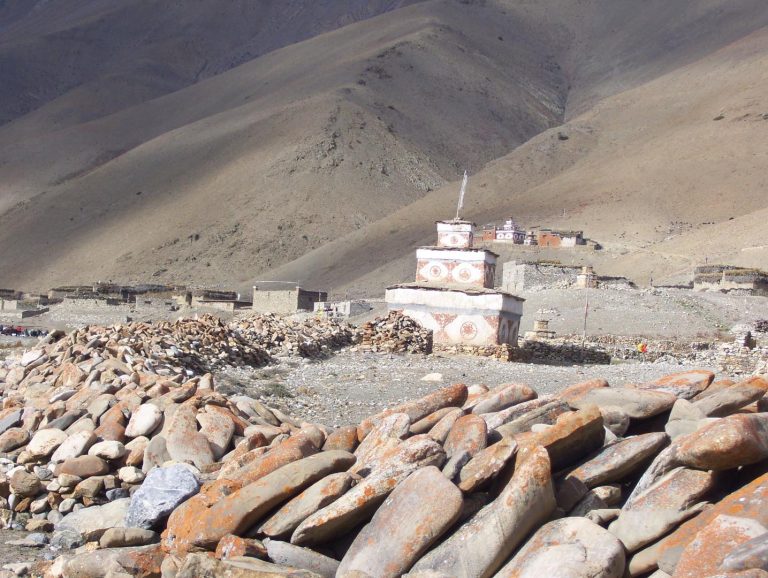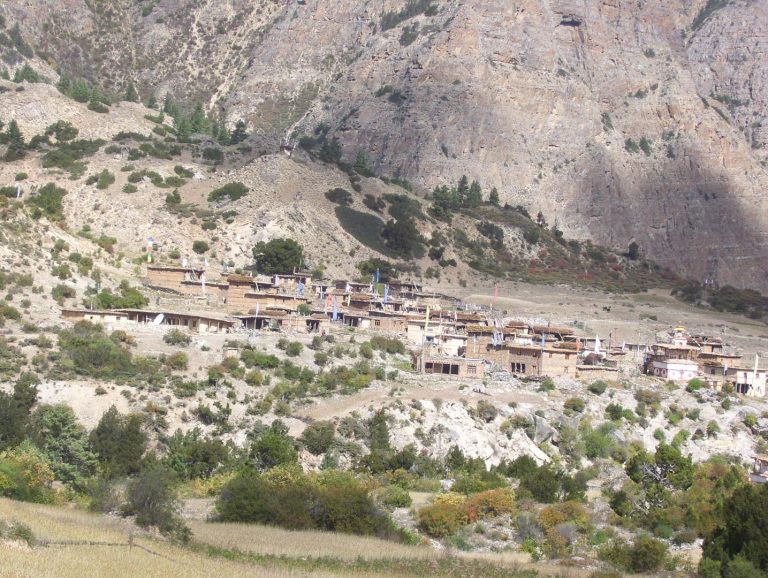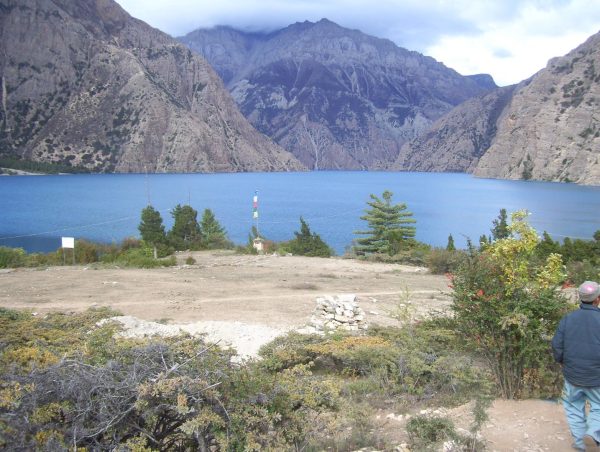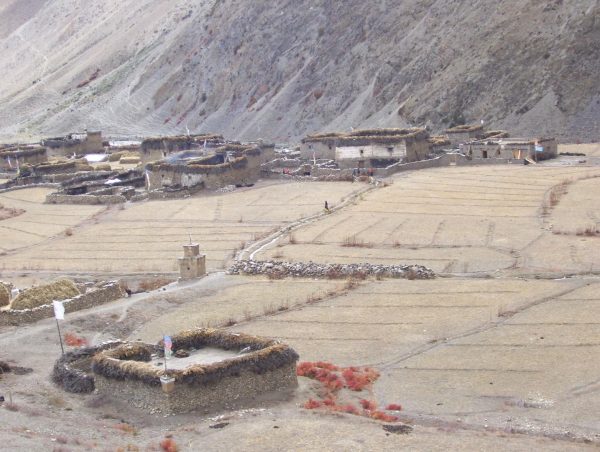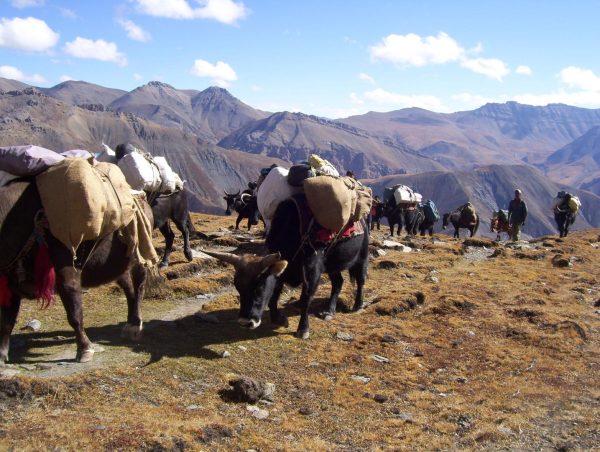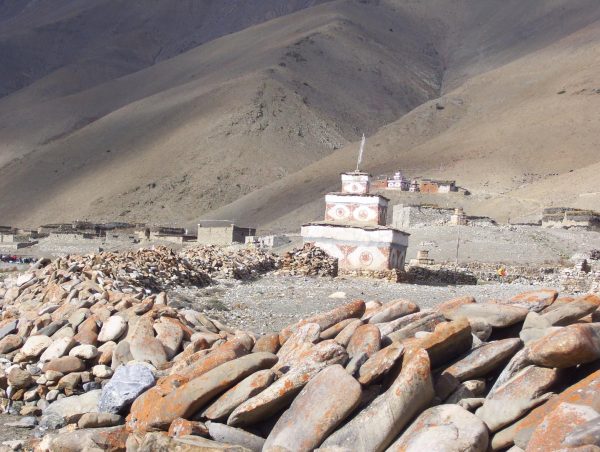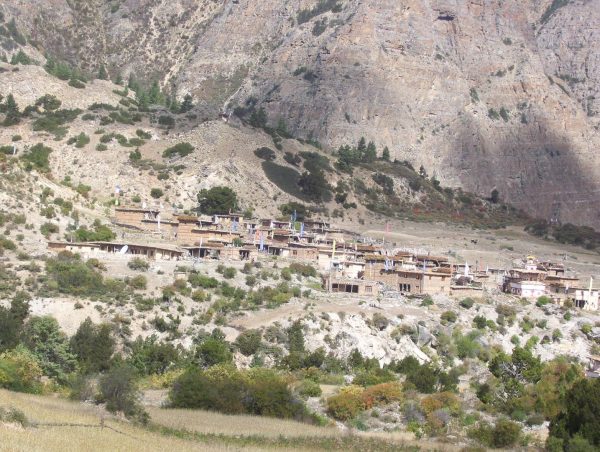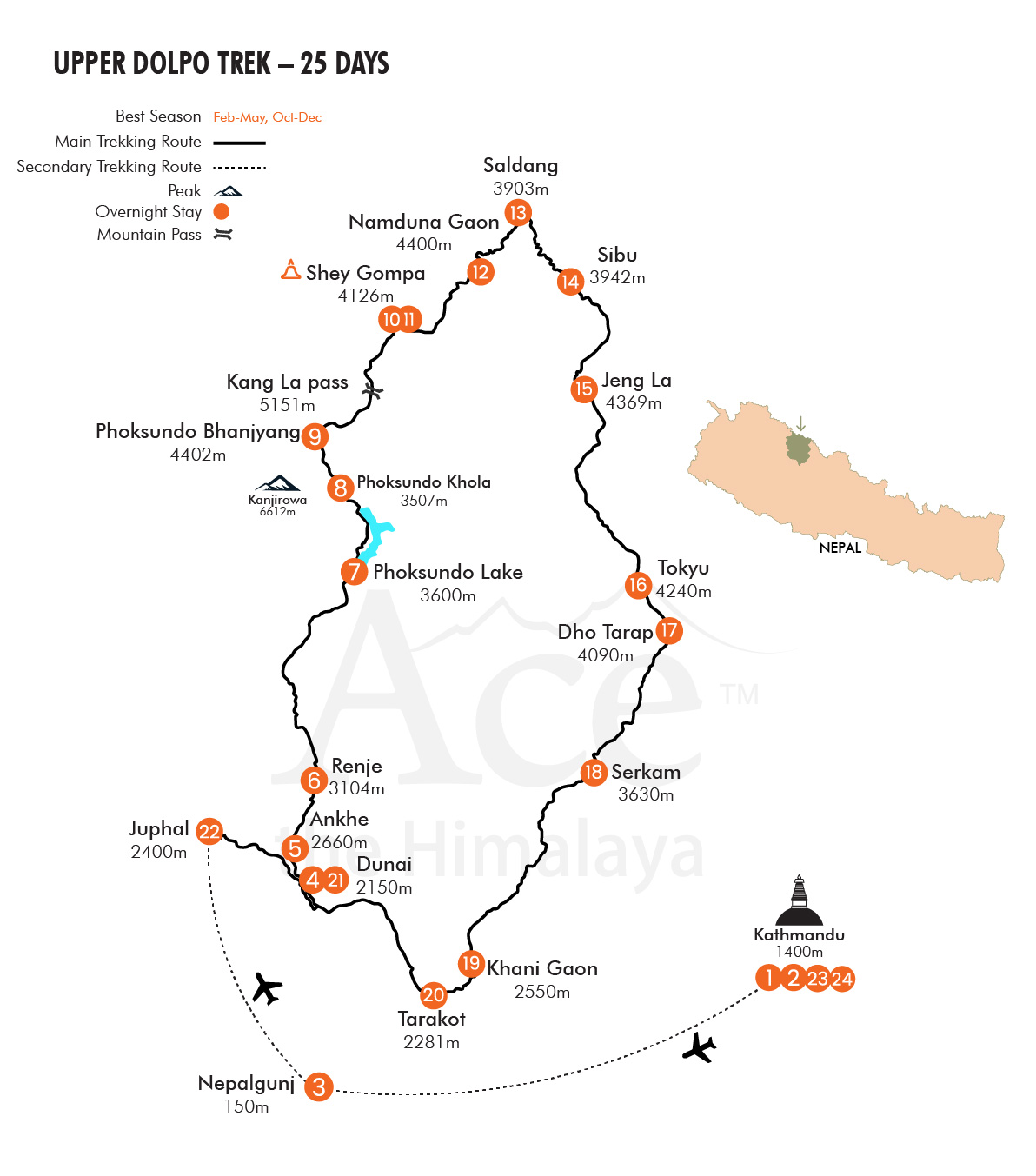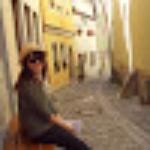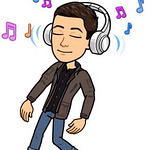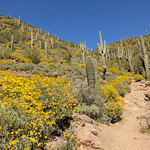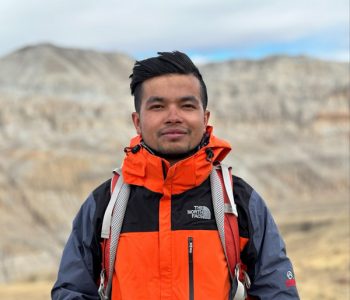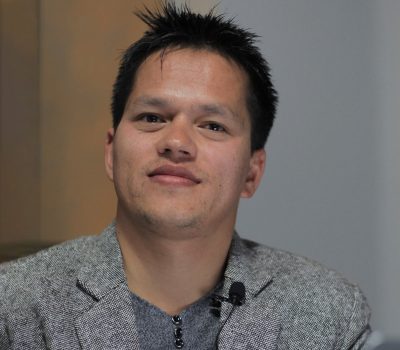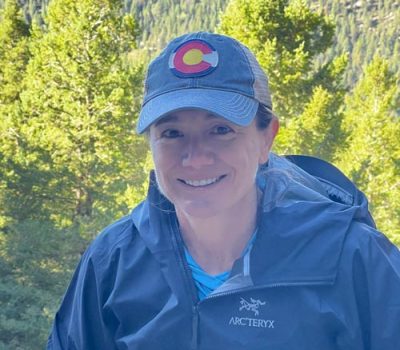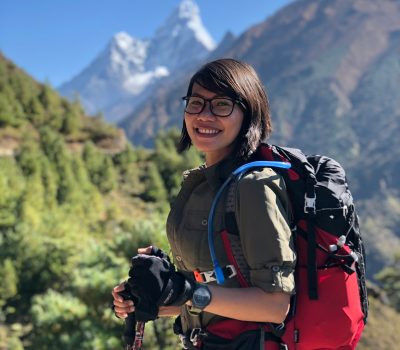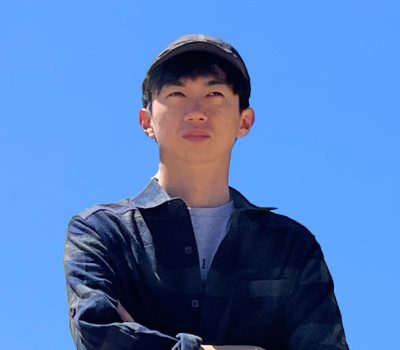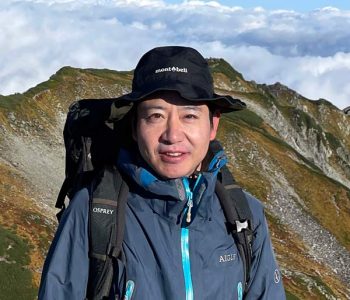Upper Dolpo Trek - 25 Days
Trek through the wild remote regions of Nepal, through the mysterious monasteries, pass the gigantic Himalayas, and experience the mountainous lifestyle in the Upper Dolpo Trek.
Trip Highlights
- Kathmandu city tour
- Scenic flight to and from Nepalgunj/Juphal
- Shey Phoksundo Lake and National Park
- Crossing passes of Kang La, Saldang La and Jeng La
- Shey Gompa- the Buddhist monasteries
- Pristine mountains, Flora & Fauna, unique culture
Trip Overview
Upper Dolpo Trek, a land beyond the Himalayas, conjures up visions of mysterious monasteries, snow leopards, and blue sheep. It is situated in the western part of the country and is one of the most remote regions in Nepal.
The Dolpo region is a very isolated area that has been strictly off-limits until only recently, so the traditions and way of life have remained intact. In the autumn of 1990, the first British tour operator organized a trek from east to west, from Pokhara to Jumla through Lower Dolpo.
This trekking route passed many gigantic mountain ranges – Annapurna, Dhaulagiri, and Kanjirowa, to name but a few – and passed through Lower Dolpo, at one time a small kingdom in its own right. The trekkers of this region are enthused greatly by the wild remoteness, the stunning mountain scenery, and the fact that the local people had that innocent friendliness peculiar to people who live in excessively remote mountainous regions.
The people that live here number only a few hundred and are among the world’s highest dwellers. The villages in Upper Dolpo trek are 4,300 m and above. It is here specifically that people still practice the pre-Buddhist Bon Po religion. This early sect was almost entirely replaced after Buddhist doctrine began to spread across Tibet in the 9th century.
Peter Matthiessen’s “The Snow Leopard” and David Snellgrove’s “Himalayan Pilgrimage” have contributed to the mystique and attraction of Dolpo. Both writers visited the Shey Gompa, to the north of the Phoksundo Lake, inner Dolpo. This is the goal of most trekkers but this Upper Dolpo trek will take you even further into this mysterious land.
Short Itinerary
Arrival at the Tribhuvan International Airport in Kathmandu (1,345 m). Overnight at a hotel.
Pre-trip meeting and sightseeing around the Kathmandu valley. Overnight at a hotel.
Fly to Nepalgunj from Kathmandu – 1 hr flight. Overnight at a hotel.
35 minutes flight to Juphal (2,400 m). Trek to Dunai (2,150 m) – 3 hrs. Overnight at tented camp.
Trek to Ankhe (2,660 m) – 6 hrs. Overnight at tented camps.
Trek to Renje (3,104 m) – 7 hrs. Overnight at tented camps.
Trek to Phoksundo Lake (3,600 m) – 6.5 hrs. Overnight at tented camps.
Trek to Phoksundo Khola (3,507 m) – 6 hrs. Overnight at tented camps.
Trek to Phoksundo Bhanjyang (4,402 m) – 7 hrs. Overnight at tented camps.
Cross the Kang La pass (5,151 m) and trek to Shey Gompa (4,126 m) – 7 hrs. Overnight at tented camps.
Rest and exploration day at Shey Gompa. Overnight at tented camps.
Cross the Saldang La pass (4,785 m), and then trek to Namduna Gaon (4,400 m) – 7 hrs. Overnight at tented camps.
Trek to Saldang (3,903 m) – 4 hrs. Overnight at tented camps.
Trek to Sibu (3,942m) – 6 hrs. Overnight at tented camps.
Trek to foot of the Jeng La (4,369 m) – 5 hrs. Overnight at tented camps.
Cross the Jeng La pass (4,845 m), trek to Tokyu Gaon (4,240 m) – 7 hrs. Overnight at tented camps.
Trek to Dho Tarap (4,090 m) – 4.5 hrs. Overnight at tented camps.
Trek to Serkam (3,630 m) – 6.5 hrs. Overnight at tented camps.
Trek to Khani Gaon (2,550 m) – 7 hrs. Overnight at tented camps.
Trek to Tarakot (2,281 m) – 4 hrs. Overnight at tented camps.
Trek to Dunai (2,052 m) – 5 hrs. Overnight at tented camps
Trek to Juphal (2,404 m) – 3 hrs. Overnight at tented camps.
Fly to Kathmandu via Nepalgunj- Total 1 hr and 35 minutes flight. Overnight at a hotel.
Leisure day and farewell dinner in Kathmandu. Overnight at a hotel.
Transfer to the international airport for your final departure.
 Note
Note
Our standard itinerary might differ slightly due to unpredictable happenings and events out of our control. Factors such as flight cancellation/delay, unfavorable weather, natural calamities, newly implemented government rules, political affairs, trekkers’ health conditions, etc., are possible. Evaluating the situation’s possible solutions allow the trekking to resume as much as possible based on the best alternatives. In these times, we look for your cooperation and flexibility.
It is advised you arrive one day before the trip start date so you can rest, and it also gives you time to buy clothing, equipment, and gear required for the trek. Also, it is best if you book your flights with spare days in Nepal for this trek in case of any flight delays or cancellations. Moreover, you have options to customize this trip where you can add on a sightseeing tour in Kathmandu, Pokhara, other adventure sports, or day trips around the country before or after the trek.
Departures & Availability
We do not have fixed departure date for this trip. This trip can only be organized upon your request. There is an option of private and tailor-made journey best suited for you, your family and friends. We have price discounts according to the group size, the bigger your group, the bigger your group discounts. We allow complete flexibility on your departure date, please choose your preferable date.
Price Includes
- All (international and domestic) airport transfers on a tourist vehicle
Twin-sharing/double accommodation in a 3-star hotel for in Kathmandu including breakfast (Private room accommodation can be organized at an extra cost)
Tented camp accommodation and equipment during the camping trek. (We will provide two-man tents, dining tents, kitchen gear, dining table, chairs, toilet tents, and shower tents).
- All your standard meals during the trek (Breakfast, Lunch, and Dinner) including one hot drink and seasonal fruits
- Experienced, first-aid trained, government licensed, English-speaking Ace the Himalaya's trekking guide
- Porters during the trek for carrying luggage (1 porter for every 2 clients)
Special Trekking Permit US$ 70 per person per day and all local conservation fees.
- Wages, accommodation, meals, gear, insurance, and medications for all staff
- Filtered water in the trails using Water Filter or using water purification tablets
Flight fare from Kathmandu – Nepalgunj – Juphal – Nepalgunj – Kathmandu including airport departure taxes.
- 1 Ace the Himalaya’s duffel/kit bag, trekking map, sun hat, Buff (Neck Gaiter) and trip completion certificate
- A farewell dinner on the last night in Nepal
- All administrative expenses and government taxes
Price Excludes
- Meals (lunch and dinner) in Kathmandu
- International flight fare and airport departure tax
- Any beverages including bottled and boiled water
- Travel insurance along with high-altitude emergency evacuation coverage
- Tips to trekking staff and driver
- Nepal Entry Visa (Visa can be acquired easily after your arrival at Tribhuvan International Airport in Kathmandu with a fee of USD 50 for 30 days visa and USD 125 for 90 days visa)
- Personal Trekking gear and equipment
- Any expenses other than the Price Include section
Detailed Itinerary
Expand AllDay 01: Arrive in Kathmandu
One of our officials will greet you at the Tribhuvan International Airport, Kathmandu, upon your arrival. We will take you to the hotel in our private tourist vehicle. Pre-trip meeting at the office with our trekking guide in the afternoon.
Note: If you arrive after 4 pm, there will be a briefing about the trip with our guide. It will be a short pre-trip meeting. Make sure to confirm your queries about trekking in the mountains. If you arrive before 4 pm, a pre-trip meeting will be organized at our office on the same day. Meet and greet with our trip guide.
Be sure to bring the following documents to the meeting; two copies of passport-sized photos and a readable copy of your travel insurance policy. These documents help to acquire trekking permits and related documentation during the trek. Pay the remaining balance of your invoice and sign in the legally binding trip form and non-liability disclaimer.
Day 02: Pre-trip Meeting and Sightseeing around Kathmandu valley.
After a hearty breakfast, at 8.30 am your sightseeing trip will start. You will have a private vehicle and a professional tour guide at your disposal. Today we will visit some heritages listed below:
Pashupatinath Temple:
Pashupatinath Temple is one of the most significant Hindu temples of Lord Shiva in the world, located on the banks of the Bagmati River. Though you are not allowed to go inside the temple as it is strictly for Hindus only, you can clearly see the temple and the activities from the eastern bank of the Bagmati River. It is a square two-tiered pagoda temple built on a single-tier plinth which is famous all over the world.
Boudhanath Stupa:
Boudhananath is one of the holiest Buddhist sites in Kathmandu. It was built in the 5th century with four pairs of eyes of Lord Buddha in four cardinal directions keeping an eternal watch over the people and their doings. You will find Buddhist pilgrims from Tibet going round the stupa spinning the prayer wheels.
Bhaktapur Durbar Square:
Visit the Bhaktapur Durbar Square, the Royal Residential Quarter of Bhupatindra Malla, famous five-storied temple of Nyatapola in Pagoda style Batsala temple, Bhairavnath temple, Duttatraya temple, Pujari Muth and Palace of 55 windows.
Day 03: Fly to Nepalganj from Kathmandu
The flight to Nepalgunj will give you good views of the Himalaya towards the North. Upon arrival, you will be transferred to your hotel. In the evening walk around the town, which is 3 kms from the Nepal-India border.
Day 04: Fly to Juphal (2,400 m). Trek to Dunai (2,150 m)
From Nepalgunj we take a flight to Juphal, it is about 35 minutes flight. Twin Otter is the primary mode of transport to and from the airstrip of Nepalgunj to Juphal and Juphal to Nepalgunj. This service is fairly dependable. Sometimes, flights may be canceled due to weather conditions or other technical problems.
After landing in Juphal we will meet the trekking crew, pack the equipment’s and walk through terraced fields to the Bheri River and the narrow canyon which after 3 hours will lead you to a relatively larger village called Dunai.
Day 05: Trek to Ankhe (2,660 m)
From Dunai you cross the new suspension bridge and turn west, following the trail past the new hospital. At the confluence of the Thuli Bheri and Suli Gad rivers you turn to the north and follow the Suli Gad. The trail is fairly undulating but mostly up while the going is firm underfoot. You are never far from the river and can always hear its roar. You pass through an area which is overgrown with marijuana plants but also has crops for the villagers and animals including millet, pumpkin, potatoes, sweet corn and chilies. Many of the villages in this area are involved in the production of a lotus-like plant called ‘chuk’ that is used to make vinegar and medicines. You continue to track the river and eventually reach the settlement of Hanke, which is also the entrance to the Phoksundo National Park. The three villages you pass through have a strange name connection: Parela, meaning eyelash, Rahagaon meaning eyebrow, and Ankhe meaning eye.
Day 06: Trek to Renje (3,104 m)
The trail starts becoming very hectic but once you cross the river twice on well-made bridges, you then make a steep ascent on a very narrow path, hugging the cliff face. Having descended to the river again the trail takes another steep ascent requiring frequent stops to watch the panorama of the landscapes and also for rest. You may camp on the side of Suligad River. Overnight at tented camps.
Day 07: Trek to Phosundo Lake (3,600 m)
From here the initial hours of the trek is fairly easy. But from Sumdo the trail becomes very much like an incline. Here the river is left behind and you follow the path high above the water. Climb up to a ridge, about 3,875 m, from where you will have the most staggering views of a 300m waterfall, the highest in Nepal, and your first view of Phoksundo Lake. You then descend through birch forests to the upper reaches of the Phoksundo Khola and on to the picturesque settlement of Ringmo with its mud plastered chortens and mani walls. The village now has solar panels helping to improve the quality of life of the villagers. From the settlement, it is a short walk to the shores of Phoksundo Lake where you set up the campsite.
Day 08: Trek to Phoksundo Khola (3,507m)
You follow the trail that skirts the edge of the lake itself. This precarious trail is suspended on a gangway of wood supported on pegs, driven into crevices in the rocks and signals the remoteness of the area you are about to enter. You go very steeply up, to 4,040 m, and then plunge down again to the valley bottom to enter the flood plain of the Phoksundo Khola and trek to your night stop alongside the river, within the confines of the forest to avoid the worst of the wind which is prevalent in the valley bottom.
Day 09: Trek to Phoksundo Bhanjyang (4,402 m)
Today you should take sandals or footwear suitable for Knee deep as you are crossings a few streams. This morning you continue along the level path through a glacial valley that now heads north. As this becomes narrower and narrower there are impressive vertical cliffs and contorted rock formations. At the confluence of the Phoksundo Khola and another, unnamed, mountain stream there is an old wooden bridge. Here you take the barely discernible path to the north east up a side valley which has a cavernous look. There is no trail as such, so it is necessary to clamber over rocks and boulders and to ford a stream that rushes down the steep valley. A long climb brings you to a sheep meadow where the trail veers up a steep ravine. A hard climb to the top brings you to yet another valley where you can see the Kang La, the pass will lead you to Shey Gompa. You camp just before the pass in a place that Peter Matthiessen christened ‘Snowfields Camp’.
Day 10: Cross the Kang La pass (5,151 m) and trek to Shey Gompa (4,126 m)
The somewhat indistinct track is physically demanding, especially on the loose slate screed. It will take about 2.5 to 3 hours to reach the top of the Kang La. The views from the top are magnificent and well worth all the hard work. The height of the Kang La is variously given between 5,200 m and 5,500 m depending on the map one uses. On descending steeply to the valley floor, not more than 45 minutes, you make a long meandering trek along the banks of the river, crossing it once. A red chorten heralds your arrival at Shey Gompa where a quaint wooden log bridge leads up to the Shey compound.
Day 11: Rest and exploration day at Shey Gompa
Shey means crystal – this monastery is also known as the Crystal Mountain. The lama of Shey resides at a red hermitage known as Tsakang Gompa which is west of Shey. It is not really a monastery but a retreat. Tsakang has been a meditation centre to many famous lamas from Tibet. Shey Gompa belongs to the Chaiba community, followers of the Padmasambhava and Kagyu sects.
It was the first Kagyupa monastery and its founder was the lama Ten-szin-Ra-Pa. The monastery was built during the 11th century. Shey is famous for its ancient Buddhist culture. In Dolpo, the ancient Tibetan way of life combines animism with the teachings of Buddha. Drutup Yeshe introduced Buddhism in the Dolpo valley. Many years ago he came to Dolpo and came across wild people, whose supreme God was a ‘fierce mountain spirit’. Crystal Mountain is to the west of Shey monastery. It is a very strange mountain indeed. Its contorted cliffs are laced with quartz and embedded with a rich variety of marine fossils. Shey Gompa stands above the confluence of Kangjunala and Yeju nala. Near the confluence, there is a group of prayer mills turned by water wheels.
Day 12: Cross the Saldang La pass (4,785 m), and then trek to Namduna Gaon (4,400 m)
Today, you start by following a pleasant track amidst juniper, which ascends to a grey, stony canyon. This begins to zig-zag over bare rocks and coarse eroded soil until it eventually brings you to a flat spot, suitable for a brew or lunch, if the weather is fine. Then continuing very steeply up for 20 minutes before traversing to the top of the Saldang La pass. Here you will enjoy great views towards the arid landscapes of Mustang and the distant snow peaks of Tibet.
The subsequent descent towards the north is long and tiring, but you finally come upon the welcome sight of pastures of grazing yaks and sheep and nomadic tents made from yak hair. This signals your approach to Namduna Gaon. Like Shey, the Namgung monastery is of the Karma-pa sect.
The monastery, a red stone structure, is built against the backdrop of a cliff on the north wall of a gorge. The red and white colors of the Gompa and its Stupas are the only color in this stark landscape. The village itself consists of only six stone houses and has terraced fields on both sides of the tributary, which flows down to the Nam Khong valley.
The economy of the region is based on agriculture, animal husbandry and trading. In Dolpo, only one crop a year can be grown and this is mainly barley. In some village buckwheat, oilseed, potato and radish are also cultivated. Recently the main cliff temple collapsed and the villagers have now built a beautiful new monastery in the village itself.
Day 13: Trek to Saldang (3,903 m)
Leaving Namgung monastery we start climbing. Further on it begins a long thrilling traverse along some dusty barren mountains. Looking down into the valley bottom it is very evident that the people have made best use of the fertile valley as one sees the neat terraced fields showing bright patches of green and ripening crops. You ascend before going down steep slopes to the picturesque village of Salding, situated on a plateau high above the Nam Khong nala and the biggest village of the inner Dolpo area. Though the village lies at about the same altitude as Ringmo, it is totally different. Ringmo, a Himalayan village is situated below the tree line while Saldang belongs to the arid zone of the trans-Himalayan Tibetan plateau. The village stretches for two kilometers on an open slope and consists of five villages having eighty well-built houses with nearly six hundred villagers. It is prosperous, not only agriculturally, but also for its strategic location on a trade route to Tibet.
Day 14: Trek to Sibu (3,942m)
After leaving Saldang on the way down to the river bed you pass through terraced fields, Stupas, Chortens, heaps of Mani stones and a Chaiba monastery. Namdo, the next village is also prosperous with sixty houses having nearly four hundred inhabitants. It stretches for more than 5 kms on the high slopes to the left of Nam Khong Khola. The Namdo monastery is located near the river bed. There is also another monastery on top of a high cliff. You camp near the small Settlement of Sibu, right on the river bank.
Day 15: Trek to foot of the Jeng La (4,369 m)
Following the line of the river valley, the trail is fairly easy going initially. After about two hours it is necessary to wade another stream before turning into a side valley and the rise becomes very sharp. This is a pleasant meadow, but bestrewn with rocks, yak and other animal droppings.
Day 16: Cross the Jeng La pass (4,845 m), trek to Tokyu Gaon (4,240 m)
The trail is generally well compacted making the going underfoot easy, much easier than loose shale, but it is steep. It is only a 2 hour climb to reach the top of the Jeng La. From the top of the pass, there are good views of the Dhaulagiri massif, glittering in the morning light. A rough track descends towards the Tarap valley. By the afternoon you find a green valley which leads you by a pleasant track down towards the Tarap Chu. Tarap is a dream valley with vast plains in high mountains extending 20kms along the river Tarap Chu. It has ten villages with cultivated fields, many Gompas and Chortens of both sects. You halt for the night at Tokyu monastery. This monastery also belongs to the Chaiba sect.
Day 17: Trek to Dho Tarap (4,090 m)
Before leaving Tokyu a short visit can be made to the Chaiba Gompa. The trail is broad and well-traveled, making the going easy and there is evidence of work in the fields, where the women will be bringing in the harvest – the men are away bringing down the herds of animals for the forthcoming winter. There are many Mani walls but some of the Chortens are in a bad state of repair. The ‘ French School ‘ is just outside the village of Dho Tarap where you have your night stop. Tarap is inhabited mostly by Magars who have lived here for generations but also by a few Tibetans. They wear home-spun clothing that is sometimes dyed maroon and they favor Tibetan style Somba (boots with upturned toes) for footgear. Men and women often wear both religious amulets and strings of coral and turquoise. The inhabitants of this village are both Bon Po and Buddhist (Nyingmapa). In the afternoon a walk up to the Buddhist Gompa is very worthwhile. There is a resident lama who is very happy to show off his monastery and might even let you see his private Gompa and the Tankas he has made himself. The Bon Gompa is about half an hour’s walk from camp.
Day 18: Trek to Serkam (3,630 m)
Your route follows the course of the Tarap Khola, generally downhill. You go through narrow gorges with the river rushing through. One may see blue sheep, marmots, yaks, sheep, and goats and perhaps meet people from Dolpo taking their flocks of sheep and goats to lower pastures for the winter. The afternoon brings more undulations in the path when it leaves the immediate course of the river. There is evidence of improvements to the trail where parts of the rock have been blasted out. You will also see the first of the modern steel suspension bridges which have been built to facilitate movement of people and animals. The track is very narrow in places. You reach your overnight camp on a grassy strip by the river.
Day 19: Trek to Khani Gaon (2,550 m)
You continue to walk down the gorge of the Tarap River, at times alongside it and at others high above, on a narrow trail built out from the steep slopes. The quality of the path varies from broad, smooth and firm to very narrow and crumbly. There are also flights of man made stone staircases which need to be tackled with care – some of the constituent rocks wobble when stepped upon! An exciting day in deep and awe-inspiring gorges. Your campsite is a pleasant meadow in the shade of a stand of trees.
Day 20: Trek to Tarakot (2,281 m)
Leaving Khanigoan by the new suspension bridge and then walk alongside the river, sometimes going very high before reaching down to the water again. Some of the trail is quite demanding and one bridge, said to have been out for six years, necessitates crossing on wet stepping-stones.
Coming into the broad fertile valley of the Barbung Chu, you walk amongst the various crops of millet, sweet corn, barley, buckwheat, green beans, chilies and marijuana. Your lunch and night stop is high above the river but there is a standpipe for water. Tarakot is an old fortress town known by the local people as Dzong, meaning ‘fort’. Before the Gorkha dynasty Tarakot was the capital and had a dzong. The famous Sandul Gompa, which lies 8km east of Tarakot and at the junction of Barbung Khola and Tarap Chu, stands on a knoll to the south of Bheri river and at one time supervised collections of tolls for the trading caravans traversing an area called Tichu Rong.
Day 21: Trek to Dunai (2,052 m)
The trail is mostly down and fairly firm. Walking beside the Bheri river, you use the ingenious path built twenty feet above the river. All too soon you have reached the village of Dunai and the camp site you used before. You will now have completed the circuit of mysterious land Dolpo and a celebration party is sure to happen.
Day 22: Trek to Juphal (2,404 m)
You now retrace your steps to Juphal. Initially, the way is flat but the final hour up to your destination seems steeper than you remember on Day One!
Day 23: Fly to Kathmandu via Nepalgunj
Early morning flight to Nepalgunj from Juphal. This is a wonderful 35-minutes flight over the Himalayan foothills, with fine views of giant peaks including Annapurna and Dhaulagiri to the north. You then connect with the flight back to Kathmandu.
Day 24: Leisure day and farewell dinner in Kathmandu
It’s also spare day in case the flight to Kathmandu is delayed. You have the option to extend your trip to continue onto Chitwan jungle safari, rafting adventure, Kathmandu valley shopping tour, scenic Everest flight, mountain biking and other activities. In the evening we will have a farewell dinner in a traditional Nepalese restaurant with cultural performances. (Your guide(s) and an office staff will accompany you).
Day 25: Transfer to the international airport for your final departure
The trip concludes today. Our Airport Representative will drop you at the international airport in Kathmandu for your flight departure from Nepal.
Gears and Equipment
Here is a list of what you might want to pack for the hike. Please take this as a starting point. You’ll need layers of warmer clothing during the winter. We provide a 75 liter duffel bag for you to use for the trek. It will be given to you during your pre-trip meeting in Kathmandu. The duffle bag is yours to keep. Also, you can rent sleeping bag and down jacket with us at the additional fee of USD 35 for each once you are in Kathmandu.
General
- Four-season (zero degree) sleeping bag (We have rental sleeping bags available for an additional USD 35)
- Puffy down jacket (We have rental jackets available for an additional USD 35)
- Daypack (35-45 liters recommended) with rain cover
- Sleeping bag liner
Upper Body
- Sun hat or cap (We'll provide you with a free Ace the Himalaya baseball cap.)
- Knitted hat/Beanie
- Headlamp
- Sunglasses
Torso
- Technical fabric base layer (light for warmer months, heavy for colder months)
- Technical fabric short (2) and long sleeve (2) shirts
- Waterproof, windproof shell
- Fleece jacket or pullover
Lower Body
- Technical fabric base layer (light for warmer months, heavy for colder months)
- Hiking pants (2)
- Comfortable pants for inside the teahouses
- Waterproof, windproof shell
- Hiking shorts
Hands
- Wool or technical fabric liner gloves
- Hard-shell outer gloves (insulated for colder months)
Feet
- Wool or technical fabric warm socks
- Hiking socks
- Liner socks (optional such as silk)
- Trekking/hiking boots (waterproof recommended)
- Ice Cleats /Micro Spikes (For trekking from November to March, it's recommended to include Ice Cleats/ Micro Spikes to prevent slipping on icy or wet surfaces.)
- Casual shoes
- Gaiters (lightweight for dust or heavy for snow in colder months)
Undergarments
Note: The quantity of each article of clothing can be adjusted to suit the preferences of each participant.
- Technical fabric/quick drying is best for underwear (opportunities to launder during the trip)
- Sports bras (women)
- Pajamas or sleeping clothes
First Aid Kits and Medications
- (Note: Guides carry medications and first aid kits during the trip. However, personal kits and medications are highly recommended.)
- Sunscreen
- Lip balm
- ointment
Other Essentials
- Passport
- Extra copies of passport-sized photos
- Reusable water bottle
- Toiletry kits
- Water purification tablets or UV water purifier (if you plan to treat water)
- Hydration bladder
- Towel
- Pillowcase
- Toilet paper (2 rolls)
- High protein snacks (such as protein bars or nuts)
- Waterproof/dry bags for carrying important documents and money
- Airline tickets (Please leave a copy at our office in Kathmandu. This can be useful if there is a change in the date of the flight.)
Optional
Once in Nepal, if you have the time, you can purchase supplies and gear for hiking. Thamel, Kathmandu’s tourist hub, is home to many shops where you can get a variety of reasonably priced trekking equipment.
- Power bank or extra batteries
- Cameras and mobile phone
- Cards/book
- Binoculars
- Trekking poles
- Whistle
- Thermos for hot water
Important Information
- We give you a free duffel bag and baseball cap during your pre-trip meeting in Kathmandu. The duffel bag will be used to pack your trekking supplies.
- For every two participants, we assign one porter. The duffel bag, which should weigh around10 kg/22 lbs, will be carried by the porter throughout the walk.
- To carry your daily necessities like cash, crucial papers, a water bottle or bladder, a camera, toiletries, sunscreen, a notebook, clothing, etc., you must have your own daypack (with a waterproof cover).
- You can store your luggage (non-trekking items) at the hotel in Kathmandu.
- The total luggage allotment allowance for the Nepalgunj-Juphal flight is 15 Kg/33 lbs including both duffel (10 Kg/22 lbs.) and backpack (5Kg/11 lbs.)
- A down jacket with a hood is a must for altitudes above 4,000 m to keep warm. You can rent a down jacket for USD 35. Please note that in case of loss or damage, you need to reimburse the cost of USD 200 per item.
- You can rent a 4-season sleeping bag for USD 35. Please note that in case of loss or damage, you need to reimburse the cost of USD 200 per item.
Note: Some clothing, especially form-fitting, figure-hugging items made of elastic material (like yoga pants), may offend locals. Therefore, if you choose to wear these clothes for comfort, please make sure to wear something over them.
Trip Video
FAQs for Upper Dolpo Trek
General
Why trek with Ace the Himalaya?
Ace has a reputation for successfully leading treks with knowledgeable leaders and staff taking care of all your travel needs. We are a certified sustainable travel company that also endorses the idea of giving back to the community by participating in various philanthropic activities. Here are 17 reasons why you should choose Ace the Himalaya for your next adventure!
Is Nepal open to travelers following the Covid-19 pandemic?
Indeed, Nepal is entirely open. Travelers are welcome in Nepal without any restrictions. Arriving travelers can obtain a visa on arrival at the Kathmandu airport as well.
What are the conditions to travel to Nepal post Covid-19?
Traveling to Nepal is now hassle-free. You don’t need a vaccination certificate or negative PCR test, but check with your airlines and transit countries for any specific requirements.
We suggest you look at the Nepal immigration site https://www.immigration.gov.np for the most up-to-date information.
What additional documents do I need?
- Two passport-sized photos (2×2 inch) to give to our office staff
- A copy of your international flight ticket to give to our office staff
- A copy of travel insurance to give to our office staff
What should I know about booking my flights to/from Nepal? Do I need to plan extra days in case of delays?
The best course of action is to add a day or two before and after your intended trek days in case of flight delays or cancellations. It also gives you time to buy clothing equipment and gear required before your trip.
Please be aware that Ace the Himalaya is not responsible for any inconveniences or missed international flights resulting from unforeseen events like airport changes, flight delays or cancellations, etc.
Is hiring a guide necessary even if I have trekking experience?
You can hike without a guide. A guide is there to assist you in going forward and making alternative plans and arrangements when unanticipated occurrences happen or when things get difficult. Our hiking leaders are qualified experts. When talking about their trip, our guests frequently remark on how much fun they had and how crucial their guide was to make it successful.
Can the guide speak English?
Our guides are fluent in English. All the guides that we assign speak and understand English. They’ll share with you the fascinating stories, traditions, and folklore of the mountains. The guides will also help you communicate with the locals since many shopkeepers and hosts of teahouses don’t speak English.
Weather and Temperature
What is the best season for this trek?
The best seasons to do this trek are autumn (Mid-September to November) and spring (March to early June). This trek is possible year-round, and we can organize it when it suits your schedule. However, we generally suggest doing this trek in the favorable seasons and keeping away from the rainstorm season (July and August). In the cold months of January and February, the temperature can be a little harsh in the mountains. However, some prefer to travel during these months as it is less crowded given that you are well prepared with appropriate winter wear and other gear.
What kind of weather and temperature can I expect while trekking?
Due to its tendency to be localized, the weather in this region is challenging to forecast. You could see rain, fog, cold, or hot and sunny weather while trekking. It is best to be equipped to handle various weather situations. In the Everest region, nighttime temperatures are significantly lower than midday temperatures. In less than a day, the temperature can change from a high of 25°C (77°F) to a low of – 20°C (-4°F). The weather and temperature ranges are typically predictable based on the month and season, even though it might be challenging to predict what each day in the mountains will bring.
Spring – March/April/May/June
Despite being the busiest season, spring is perhaps the best time to visit the region. The many varieties of blossoming trees should be visible, and the sky should be clear with stunning vistas. During springtime, the average temperature is 20°C (68°F), with a high of 25°C (77°F) during clear days and a low of – 15°C (5°F) overnight above 4000 meters.
Monsoon season – July/August through Mid-September
Since it rains heavily at elevations below 3500 meters, this season isn’t exactly ideal for trekking. While it can occasionally be dry in areas above 4000 meters, it frequently rains so therefore not many people travel during this season. Trekking during the monsoon season has some advantages, such as a greater possibility of seeing waterfalls and the best opportunity to escape crowds. During the monsoon, the average temperature is 22°C (71.6°F), with a high of 30°C (86°F) during clear days and a low of- 5°C (23°F) overnight above 4000 meters.
Autumn – End of September/October/November
Autumn is equally as busy as spring. It is one of the best times to go, too. While the plants and trees are not in bloom, the sky is often clear, offering breathtaking vistas from almost every viewpoint. The average temperature in autumn is 17°C (62.6°F), with a high of 20°C (68°F) during clear days and a low of – 15°C (5°F) overnight above 4000 meters.
Winter – December/January/February
Due to fewer tourists, some people like winter travel. Even while the views are still beautiful, it can be cloudy, thus adding extra days is highly advised during this time. The average temperature is 10°C (50°F), with a high of 17°C (62.6°F) during clear days and a low of – 20°C (- 4°F) overnight above 4000 meters. The teahouses provide extra blankets for warmth at night.
What is the temperature rating of the sleeping bag that you lend to trekkers?
The temperature rating of the sleeping bags that we rent to trekkers is about -10°C (14°F). Also, our guides can obtain extra blankets if needed at the teahouses.
Arrival and Visas
Is it possible to obtain a visa for Nepal upon arrival at the airport?
Yes, you can obtain a Nepal visa upon your arrival at the airport. There are kiosks in the arrival hall that you use to complete the necessary forms. The cost is USD 30 for a 15-day tourist visa, including numerous entries, or USD 50 and USD 125 for a 30-day or 90-day tourist visa including numerous entries respectively. You should carry cash (USD) with you to pay your visa fees quickly and easily, as digital payments are frequently unavailable.
Who will come to pick me up at the airport upon my arrival?
Our staff will be waiting for you outside the airport terminal with our signboard (Ace the Himalaya). You will be accompanied to a hotel in a private tourist vehicle.
Payments and Extra Costs
How much additional money do I need per day?
Typically, USD 15 to 20 per person per day will be sufficient. This is to purchase water, tea/espresso, snacks, and hot showers in the mountains and for lunch or dinner in Kathmandu. Additionally, if you want to buy souvenirs or native Nepali goods, you can bring extra cash with you.
Is it possible to use credit cards in the places I visit during the trek?
In Kathmandu, yes. Once you are out of the city, all you need is cash. Please change the currency to local Nepali Rupees before you go to the mountains
Is it possible to reserve a trip now and pay a deposit later, or do I have to pay a deposit at booking/reservation?
When you book, you must pay a 30% deposit to secure your itinerary. The remaining balance can be paid upon your arrival at Kathmandu or before arrival. US Dollars cash and credit cards (Visa, Master, and American Express) are accepted once in Nepal. Please note a 4% transaction fee will be added for all credit card transactions.
How do I pay the remainder of my balance upon arrival in Kathmandu? US Dollars cash or credit card?
You can make payments via US Dollars cash or credit card (Visa, Master, and American Express). A 4% transaction fee is added if paying with a credit card. Thus, we encourage you to pay with USD cash if you are planning to pay upon your arrival in Kathmandu.
We prefer you pay with larger bills (USD 50 or 100). Please note that the cash should not be older than 2009 and in good condition, as banks do not accept worn, torn, or crumpled bills.
How are the ATM and money exchange facilities in Kathmandu?
There are ATM and money exchange facilities almost every few meters in Thamel, where you will be staying in Kathmandu. So, you can easily use your cards to cash out limited sum of money to which a minimum charge is deducted by the ATM facility itself. You can easily exchange your foreign currencies in currency exchange centers for an exact rate.
Who Can Trek?
Do I need prior trekking experience?
Previous trekking experience is not required if you are physically healthy and have enough enthusiasm for the trek.
Are there any age requirements for mountain trekking?
Our treks have no age restrictions if members are healthy and willing. We have had families with kids as young as 5 years do the treks along this region, and our oldest adventurers have been in their late 70s.
Is trekking to mountain regions safe for solo female travelers?
It is safe for a female to trek alone in Nepal. Nepal is usually regarded as a safe nation for female visitors traveling alone. It is entirely safe for a solo woman to trek with Ace the Himalaya on any of our treks.
Physical Fitness
How challenging is the trek?
This is a strenuous trek in a very remote region. You need good stamina for a long day effort while crossing the high passes in this trek. Any person suffering from a pre-existing medical condition or disease must seek medical advice before considering any trek. Whilst on the trek, it is common to experience some discomfort before being fully acclimatized.
How quickly do you walk on the trail?
The average walking speed for a reasonably fit person is 4 kilometers per hour. At higher elevations, it is highly recommended that you walk slowly to help with acclimatization.
What kind of physical training is necessary for trek preparation?
For trekking, you must prepare your body to walk over uneven, hilly landscapes while carrying a backpack. Walking at an incline, jogging, cycling, and going for long-distance hikes are all good ways to exercise. You should work out for at least one hour four to five times a week for at least two months before trekking.
What are the physical standards that I need for the trek?
Participants in good physical condition should be able to complete this trek. If you are not physically active, we advise starting an exercise regimen two months before the trek that includes at least an hour of walking at an incline, running, or biking four to five times a week.
Incorporating hiking into your workouts is ideal. It is advised to speak with a doctor before making travel arrangements if you have any health conditions that could affect your ability to complete the trek.
Trek Preparation and Packing
What are the procedures after I make my deposit?
After making the deposit, one of our staff will email you for further information. We will require a copy of your passport photo page and your arrival/departure flight details. We will also provide you with additional trip information.
What sort of insurance do I need? How can I obtain a policy?
Travel insurance is mandatory for our hiking itineraries. We require your policy have medical evacuation coverage for the maximum elevation of your itinerary. Insurance may also cover additional costs in the event of a flight delay or cancellation caused by bad weather, medical costs, theft, loss, and damage to your items while traveling.
Travel insurance can be obtained online by one of several travel insurance companies. Please note that insurance obtained from an airline at the time of booking your flight may not cover medical evacuation coverage.
What are the necessary items that I should pack for my trip?
You can find the necessary items to pack for the trek on the Equipment Tab. Gear and equipment can be bought or rented upon your arrival in Kathmandu. If you plan on buying or renting gear in Kathmandu, please allow extra time.
Do you provide sleeping bags or down jackets for rent?
Yes, we do provide sleeping bags or down jackets for rental costs of USD 35 each. Do let us know before initiating the trek and we shall provide items.
What type of bag will the porters carry?
We provide you with a free duffel bag of 70 to 80-liter capacity that our porters will carry. The maximum weight that porters can safely carry is 30kg, and each porter is assigned to two people.
What type of daypack should I bring?
We suggest a 30 to 40-liter capacity daypack. Wider straps and hip belts are recommended to assist you in carrying weight evenly and reduce pain.
What about my passport, medications, and belongings?
Bring copies of your passport, insurance papers, and other essential items in your carry-on during your flight. If you need to take medications daily, keep them in your daypack with your other essential possessions. You can store other non-trekking essentials in the office of Ace the Himalaya or at the hotel in Kathmandu.
Accommodation
What kind of lodging is available in Kathmandu and on the trek?
We use standard rooms at two or three-star hotels in Kathmandu with breakfast included.
We provide a basic guesthouse in Nepalgunj on twin sharing basis.
Along the trekking routes, we provide the best possible camping service complete with comfortable two-person tents with good mattresses. A kitchen, dining, shower, toilet tents, and chairs with tables are also provided. Refer to the equipment list for items you will need to bring. We usually camp in or near a village, which allows you to buy sweets and drinks, which we do not carry with us. You will also get a small bucket of hot water each morning in your tent for a quick scrub-up.
Is it possible to have private rooms while trekking or while in Kathmandu?
A private room in the teahouses cannot be guaranteed during peak season. During the non-peak season, the teahouses may provide a private room without any additional cost. The accommodation during the trek will remain very basic with twin sharing rooms and occasionally dormitory rooms for our trekkers.
We can arrange for a private room while in Kathmandu for an additional cost of USD 35 per room per night.
What happens if I end up staying an extra night/s in Kathmandu due to an unforeseen delay or cancelation?
In case of unforeseen circumstances such as flight cancellation, your health, or for any reason you decide to discontinue the trip and arrive early in Kathmandu then you will need extra accommodations in Kathmandu. The cost of the teahouses in the mountains is not equivalent to the cost of a hotel in Kathmandu. In such cases, we will arrange your accommodations, but you will need to pay a supplemental charge.
Is it necessary to bring toilet paper for the trek?
You can buy toilet paper in the guesthouses during the trek, but it can be expensive, so we suggest you bring some with you. You also need to bring personal items such as towels, soap, hand sanitizers, and so on.
Are there restrooms along the trail?
There are toilet facilities in the teahouses/lodges during the trek. Trekkers can also find private areas along the trail for emergencies.
What sort of food can I expect in trekking?
There are a whole lot of good restaurants in Kathmandu where you can find any delight of your choice. During your stay in Kathmandu, please note that this package doesn’t include any meals.
During the camping, our expert camping cook can prepare normal and special meals upon request. There is a wider variety of food available, including Western-style food, and you may request to eat at any point of the day. The camping price includes an all-you-can-eat food service.
I'm a vegetarian. Is that a problem?
Most of the teahouses in the mountains offer vegetarian meals. So, being a vegetarian is not a problem. Vegetarian meals are preferable to avoid food poisoning and indigestion.
Is the water okay to drink? Do I need to bring purifying tablets or filters?
Natural spring water or tap water can be found along the trek and in guesthouses but must be treated. We use Katadyn filters to purify the natural water sources to make them safe to drink. This way, it is sustainable and pocket friendly as you need not buy bottled mineral water. You must carry a water bottle that can hold both hot and cold water and a hydration pack.
If the temperature drops too low for the Katadyn filter to function properly or if any technical issues occur, it is recommended to buy boiled water from the teahouse to ensure safe drinking water as an alternative.
Can we get hot or boiled drinking water? Does it cost extra?
Yes, teahouses do provide hot boiled water for an extra charge of USD 2 to 5 per liter. The cost varies and increases at higher altitudes.
Can I shower/bathe during the trek?
As it is a fully camped trek, showers can be a little hard to manage. You can however shower once you are back at your hotel in Nepalgunj and Kathmandu.
Can I charge my electronic equipment during the trek?
You can charge your equipment while at Nepalgunj. During camping, you might have to rely on backup power, so it is not a guarantee. It is suggested you carry portable power banks and such along with two pins (type C) and three pins (type D) adaptors. Bring these adaptors or purchase them while you are in Kathmandu.
Health and Safety
Do your guides have the trekking guide certificates from the Hotel Management and Tourism Center? Have they received first aid training for high altitudes?
We provide licensed trekking guides with fluent English. Our guides are certified by the Hotel Management and Tourism Center after receiving 45 days of training. Similarly, the guides receive high-altitude training from Kathmandu Environmental Education Project (KEEP).
What are safety measures in place? What safety equipment do your guides carry on the trek to deal with sickness/accidents?
Our guides are well trained and certified in first aid. Throughout the journey, our guides will evaluate your condition and your oxygen level using an oximeter. Our head office receives continuous updates on your condition and location through the guides. In places without a phone signal, your situation will be updated through a satellite phone during emergencies.
How do you allocate guides and porters in a group?
We allocate one guide for groups of up to 8 participants. For groups of over 8 participants, we allot an associate guide. As per the size of the group, we may add more guides or divide them into sub-groups.
We provide one porter for every two clients. Two clients’ duffel bags will be carried by one porter. The weight limit is 30kg or 15kg for each client. For an additional cost, we can arrange for one porter to carry one participant’s duffel.
Is Ace the Himalaya's staff insured?
Our company insures all our trekking staff members, including guides, cooks, Sherpa, and porters. Please browse through our legal docment page to view insurance details.
What vaccinations will I need?
- Typhoid vaccination is recommended but not required
We suggest you have a dental checkup before your trip and know your blood type. It is helpful if you inform us of any medical condition that is relevant so we may convey this information in the event of an emergency. Ace the Himalaya keeps your medical condition confidential unless treatment is necessary.
What if I am very sick in the mountain?
Our guides are 24 hours available for the services during the trek. They are trained to use first aid kit and have knowledge to use Oxy meter. They are very much aware that higher the altitude the oxygen level gets lesser so to get updated on the oxygen level of our client and to know whether they are fit enough or needs extra precautions to continue.
Guides carry local sim cards both Nepal Telecom and Ncell in order to update whereabouts and situation of our every client. During the time of emergency our guides are alert and keeps updated to head office in Kathmandu that is available 24 /7 to arranging from horse to mules or helicopters in the must needed cases especially when client is seriously sick in the mountain and needed to be hospitalized.
How are acclimatization and altitude related?
Air at higher elevations has less oxygen available. To avoid altitude sickness, acclimatization days and slow climbs are recommended at higher elevations. Along the trek, you’ll be assisted by our professional guides in recognizing and preventing altitude sickness.
What kind of trekking boot would be best for the trek?
An important piece of equipment is your trekking boots. Invest in a durable and comfortable pair, preferably with water-proof lining. Boots that provide ankle support on rough ground and have stiff soles are recommended.
What is necessary for sun protection during the trek?
Even when the sun isn’t shining, sun protection is essential. UV rays are reflected by the snow and the harshness of the sun will damage your skin before you notice it at high elevations. Therefore, proper clothing and sunblock are necessary. Hat, sunscreen, sunglasses, clothes, etc. are vital for sun protection.
Practical Matters
What is your cancellation policy?
Notice should be provided 20 days before the trip start date in case of cancellation. The trip can be canceled for justifiable reasons. Once the trip is canceled, a fee of 30% of the trip cost is retained for administrative costs.
However, the trip amount is entirely non-refundable if the cancellation is not made before the 20 days as per our terms and conditions. For submitting a claim to your insurance company after the cancellation, we can assist with documentation such as a receipt of monies paid. Refund will not be provided for unused accommodation in case of trip cancellation caused by personal reasons/sickness/weather.
More information about our cancellation policy can be found here in Terms and Conditions page.
Do I need to tip my guide and porter? How much would that be?
Tipping is expected and appreciated. You can tip your trekking guides and porters based on your satisfaction and enjoyment. We suggest you spend at least 10% of your total trek cost for tipping staff. You’ll learn more about how much to tip your group’s guides and porters during our pre-trip briefing in Kathmandu.
Is there any communication while we are trekking?
Yes. The guides carry local cell phones, so you can use their cell phones if necessary and reimburse them. Assuming you have brought your cell phone, you can obtain a local SIM card and use it. Our guides or representatives can help you get a local SIM card after your arrival. There is the availability of Wi-Fi at most teahouses for an additional cost. We utilize satellite telephones for emergencies.
Does it cost an extra amount if I am a solo traveler?
If you are a solo traveler and book one of our published dates, there is no additional fee. If you sign up for a private trip or change the trip date from one of our published trip dates, you will be charged an additional fee.
Is there a provision for a refund policy if I don't accomplish the trek?
Trekkers occasionally fail to complete the journey for medical or personal reasons. In this situation, be aware that we do not issue any refunds for products purchased or unused trek days. We must pay our administration staffs, guides, and porters, purchase trekking permits, and all other booked accommodations in advance, so our expenses remain the same.
Who else will be joining my trekking group?
If there are any, you will be allocated to a trekking group. The details of the personal data of your group members cannot be disclosed. However, feel free to contact us if you have queries about other trekkers in the group and we shall give you a general idea of the ages, nationality, and sex of your group members. Chances are you will be trekking with others unless you have booked a private trip.
Can I add extra days to my trekking trip?
You can extend your trekking trip for an additional cost. Potential arrangements will be made if we get a request from your guide. This is applicable for private or solo trips as the itinerary can be easily adjusted. The addition of extra days is bound by time when you are in a group. Therefore, discuss with your group and guide, what changes can possibly be made.
I want to extend my holiday, any recommendations?
Yes, you can extend your holiday. Ace the Himalaya offers many options and alternatives for your holiday extension. For more information, you can visit our Day trips pages.
Transportation and Flights
Do I need to book my international flights for the travel to Nepal?
Yes, you must book your international flights. We are a local agency and do not make international flight arrangements. You can easily browse through flight tickets in airlines sites to book ones most feasible for you.
What form of transportation do you utilize?
We utilize private tourist vehicles for touring, city visits, and airport pickups. Based on the group size, we use cars, minibusses, or vans. We use 4WD SUVs when necessary. For domestic flights (Kathmandu – Nepalgunj – Kathmandu), we use Sita Air, Tara Air, and Summit Air.
Twin Otter and Dornier planes are usually used during flights from Nepalgunj to Juphal.
Traveler Reviews
These full and frank reviews are from travelers who have traveled with Ace the Himalaya previously. The reviews and experiences shown here are from reputable travel websites like TripAdvisor, Google, Facebook, and Trust Pilot, etc.
 Google Reviews
Google Reviews
What makes this trip different ?
Our CSR with Sambhav Nepal
- Ace the Himalaya believes in giving back to the communities that surround and support tourism in Nepal. Ace provides logistical support and, if needed, cash donations to the projects of Sambhav Nepal (a local NGO).
- Sambhav Nepal and Ace work together to plan volunteer programs that will bring in foreign volunteers and make use of their enthusiasm, time, and talents in a variety of projects.
Sustainability and Responsible Tourism
- Of the few Travelife Partners in Nepal, Ace the Himalaya is one. We respect the procedures for sustainable tourism. Our excursions are socially and environmentally conscious, leaving the lowest possible impact in the Himalayas.
- About 80% of Ace the Himalaya’s staff members are natives of the regions where our trips are organized. It is one of our sustainable and responsible efforts to help local communities, support small businesses, and promote regional culture and way of life.
